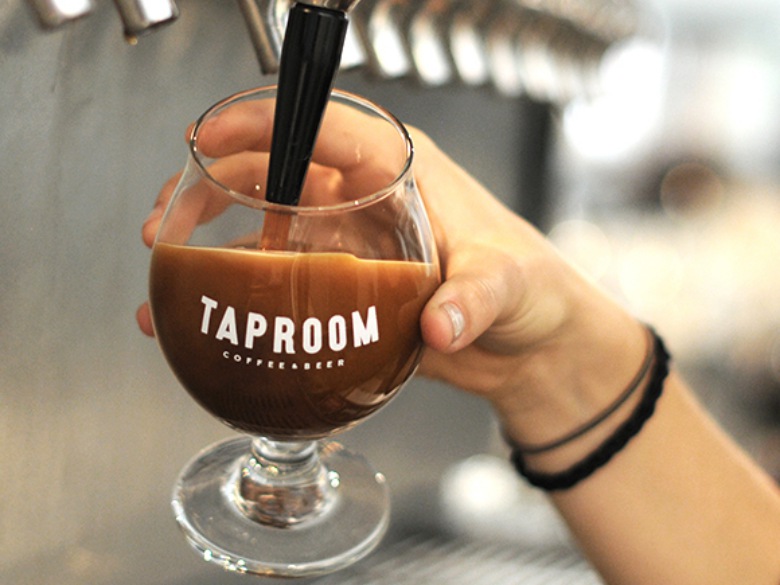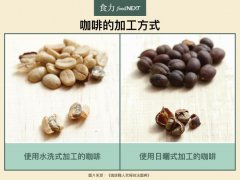Cold extract, ice drop, iced American coffee, iced Japanese coffee, do you really understand?
For professional baristas, please follow the coffee workshop (Wechat official account cafe_style)
Cold extracted / cold brewed coffee (COLD BREW) is injected into coffee powder with cold water and placed in a low temperature environment for about 12 hours (including coffee powder). The concept is similar to cold brewed tea. Ice drop coffee (ICE DRIP) is obtained by dropping ice water into the coffee powder, extracting it drop by drop, and then fermenting the coffee liquid (without coffee powder) in a low temperature environment for several hours.
According to Mintel, a global market analysis and research firm, sales of iced coffee in the United States have increased by 75% in the past decade. With the cold extraction method used by leading coffee makers in BlueBottle and Stumptown Coffee, and the large-scale promotion of Starbucks, cold-extracted coffee has become a particularly attractive category of coffee, with sales of iced coffee up 338.9% from 2010 to 2015.
Although the extraction speed is slow at low temperature, in terms of flavor, low temperature extraction coffee is more mellow and popular because high temperature can easily decompose tannic acid in coffee into pyrowu acid, resulting in acidity and bitterness. Common cold brewed coffee, iced American coffee, ice drop coffee and so on, although they are all low-temperature products, but the production process and flavor are very different.
Cold extract / cold brewed coffee (COLD BREW)

The concept of cold-extracted coffee is similar to cold-brewed tea. During the extraction process, the beans are ground, injected with cold water, soaked in a low temperature for at least 12 hours, and then filtered out before drinking.
This cold bubble method will magnify the various flavors and aromas of coffee, reduce the acidity, and make the flavor cleaner and purer. The characteristic is that the more cold the drink, the better the flavor. It is more popular in the United States to add equal proportion coconut water, which is more popular in the United States to add equal proportion coconut water. Each recipe has its own flavor.
Nitrogen cold extracted coffee (NITRO COLD BREW)

Picture flipping = Imbibe Magazine
Cold coffee injected with nitrogen will produce dense bubbles, making nitrogen ice drop coffee very beer at first glance, so nitrogen coffee is also known as "beer coffee". Bubbles not only smooth the texture of the coffee, but also feel as if cream has been added. Many drinkers feel that it tastes more mellow than the original cold-extracted coffee, even without adding sugar. Innovation in technology and brewing makes iced coffee take on a new look.
Ice drop Coffee (ICE DRIP)

Ice droplets use a mixture of ice water below 5 degrees C to let the ice melt naturally and control the speed at which ice water drips into coffee powder through a valve. Ice water drops slowly dissolve the flavor of coffee in coffee powder and leak the extract bit by bit. The time of complete extraction is about 2 to 8 hours. In order to get a better taste, it takes 12 to 48 hours of cold storage and fermentation time. The amount of each extraction is very small (usually 30 to 60 milliliters). Generally, the concentration is very high without ice. If the coffee is too strong, it will be diluted with ice according to your taste. Because of the slow process, ice drop coffee is more expensive, but tastes excellent.
American barista champion Laila once said in an exclusive interview that ice drop coffee has more aroma and more delicate and subtle taste than cold coffee.
Iced American coffee (ICE AMERICANO)

Ice American coffee is extracted by Italian coffee machine at high temperature. finally, the coffee liquid is poured on ice cubes and added ice water according to personal preference, which is similar to the flavor of general high temperature extracted coffee. Ice cubes and ice water only have cooling and dilution effects.
Japanese iced coffee (Japanese-style cold coffee)

Japanese iced coffee is not ice drop coffee, but some people say it even tastes better than ice drop coffee because they believe that some special odor molecules need to be heated to extract. The method is to cool the extract of the hand-brewed coffee directly by placing the cup with ice under the filter cup of the hand-brewed coffee. If you want to save time, it is also an option.
The taste of coffee extracted at low temperature will change according to the degree of coffee roasting, water volume, water temperature, droplet speed, coffee grinding thickness and other factors, and the perfect proportion needs to be adjusted by time and experience. Low-temperature extracted coffee tastes sweet, low acidity, mild bitterness, and adds layers after fermentation, but it is also easy to lose the special flavor that has been released at high temperature, so the selection of bean varieties and roasting degree also requires special consideration.
If you want to try to make your own cold coffee at home, Cold brew brothers Jan and Niclas teach you four simple steps: "first of all, don't believe the nonsense that coffee beans are 'the thicker the better'. The suggestion is to make about the thickness of breadcrumbs and adjust them from time to time according to the length of extraction time. Second, ice brewing time is about 12 to 24 hours, 18 hours is best to drink, if it is ice coffee, the extraction time is relatively short, about 1 drop of coffee per second can be controlled; third, do not need to use 0 C ice water, about 20 degrees C filtered water; 4, if it is cold brewed coffee, then only the last step: filter out the coffee grounds. Let's drink! "
Important Notice :
前街咖啡 FrontStreet Coffee has moved to new addredd:
FrontStreet Coffee Address: 315,Donghua East Road,GuangZhou
Tel:020 38364473
- Prev

The flavor of beans in the same coffee farm is very different. This is the secret of processing.
For professional baristas, please pay attention to the most commonly used coffee processing methods in the coffee workshop (Wechat official account cafe_style), mainly washing and tanning. Although the washing type has a wide range of use, its procedure is complex, and each procedure requires different equipment; in comparison, the traditional solarization rule is more environmentally friendly, but it may cause shortcomings such as uneven color and reduced quality. In harvesting
- Next

Treatment of sunburned coffee beans and washed coffee beans
Natural sun treatment: retain all substances Brazilian half-sun: natural removal of pectin complete washing method: the use of water washing and fermentation to remove the skin, pulp and mucous membrane. Natural washing: the use of high-pressure washing machine to treat coffee beans Honey treatment: remove the peel and pulp, retain some or all of the mucous membrane (honey) semi-washing method: contains the characteristics of both washing and drying
Related
- What is the meaning of lactic acid fermentation with coffee bean treatment?
- How to judge the state of foam by sound?
- How does the latte pull out the unicorn pattern? Come to get for a little trick to improve the flower pull!
- Will flower pulling affect the taste of the latte?
- Do you know the history of coffee?
- The difference between honey treatment and sun washing what is raisin honey treatment?
- What kind of milk can a novice use to make coffee foam to keep the foam longer? The correct method and skills of milking tutorial sharing
- Why do washed coffee beans taste sour? Flavor characteristics of washed Coffee
- Introduction to the skill of how to practice the size and height of water injection around the circle of hand-brewed coffee
- How do beginners practice coffee flower drawing from scratch?

